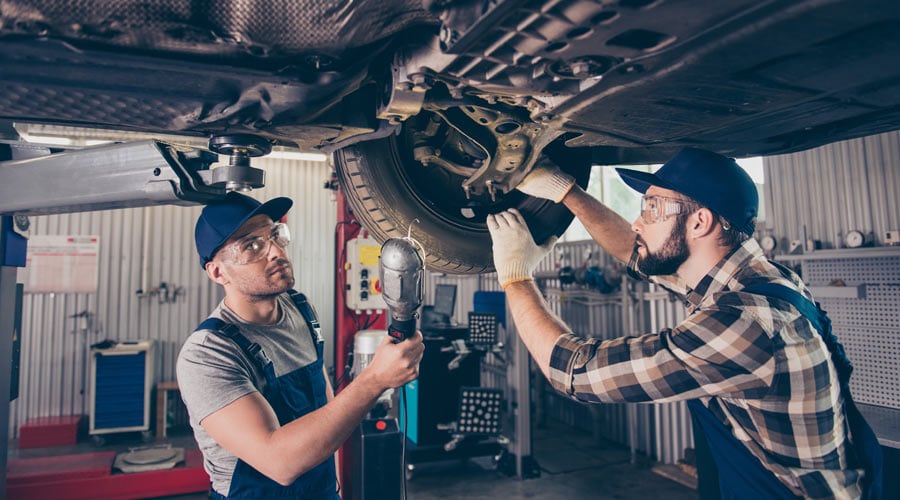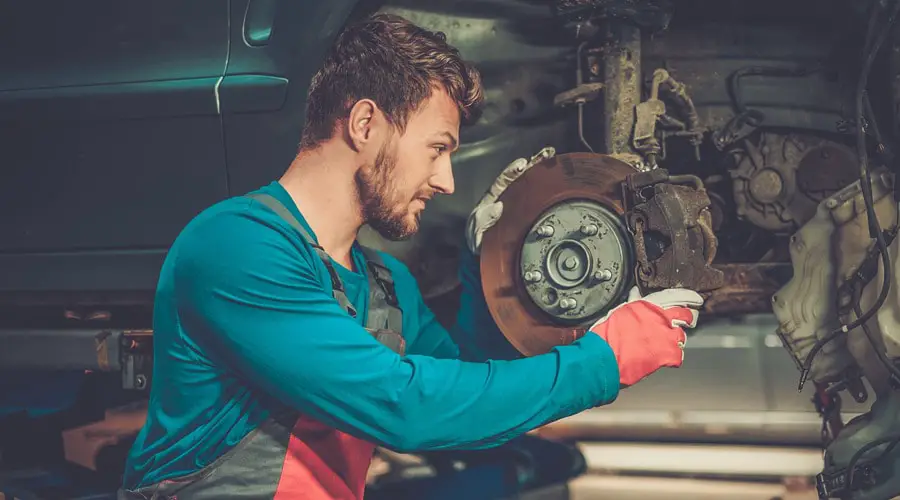
As car owners, we try to stay on top of repairs and ongoing auto issues so we aren’t hit with large repair costs due to poor maintenance. But cost and availability play into this as well. If we don’t have the money, we often delay getting work done on the car. While that is okay for some things, when you are dealing with brakes, the delay can be dangerous. Brakes keep us safe as we hurtle down the road in a ton of metal and glass. They are not something trivial that can wait to be fixed.
Maintaining your Brakes
There is no definitive answer as to how and when you should get your brakes repaired, serviced, or replaced. Many variables come into play. This is true for all parts of the braking system which includes the brake pads, discs, calipers or rotors, and fluid. They are all interconnected so when the brake pedal gets pressed, the fluid causes the caliper to push the brake pad against the disc. This creates the friction that slows the car down and creates wear on all the parts every time it happens.
Each item has different wear times and maintenance requirements. Some wear out faster than others and some can be serviced to delay the cost of replacement. Some factors need to be considered with each part and when they should be changed.
First, consider your driving habits. If you drive aggressively with hard braking and turns, your brakes are going to need to be worked on sooner rather than later. The high pressure put on the braking system and high heat created with sudden and hard stopping mean the parts, especially the pads, are going to get worn down. If this is your driving style, the brakes need more monitoring and work done on them earlier.
Second, while discs and calipers need replacing over time, brake pads need attention more often. They take the biggest hit. Most brake pads are said to last up from 25,000 to 75,000 miles under normal driving conditions but that doesn’t take into account that the material of brake pads contributes to this number. The range is huge simply because there is no way to nail down a definite answer.

The materials differ as do prices. Pads can be made of organic compounds, semi-metallic, ceramic, and other mixes and, while all have their pros and cons, they wear out very differently. Know the suggested wear time on the pads and then factor in your driving habits so you can approximate when to have your brake pads checked and replaced if needed.
The other issue with brake wear is how you use your vehicle. If you haul trailers or big loads or often drive on steep hills then you need your brakes looked at sooner than if you drive under normal circumstances. Any of these circumstances put a lot of extra pressure on the vehicle’s brakes and even the best brake pads and other parts will be put to the test.
Warnings that you Need Brakes
While you can estimate when to replace brake pads and other brake parts, there are some signs that that let you know you should do it quickly rather than waiting. They are:
- If you find that your stopping distances are lengthening, the brakes are working harder and are less effective.
- If you check your brake fluid and find out it is low, you may have a leak which hampers your braking ability.
- If your brake pedal is not responding as it usually does. If it is going to the floor before the brakes start to work, you have a brake issue.
- When your brake pedal is soft or not solid under your foot, the brakes need to be checked
- If your car begins to pull one way or the other when you brake, there may be uneven brake pad wear.
- If the brakes or steering are pulsing when you push on the pedal, it may mean that the pads are worn down and the discs are getting warped.
- If the wheels lock up or go into a skid when you brake.
- If you hear any odd noises, especially a squeak, there is a potential brake issue. Many brake pads have squealers built-in so you know when they are worn down.
Final Thoughts
Read more about brakes with these guides:
- When To Replace Brake Pads
- Brake Pads Cost
- Different Types Of Brake Pads
- Average Lifetime Of Brake Rotors
- Difference Between DOT 3, DOT 4, And DOT 5.1 Brake Fluid
If you find you have any of these issues while driving and braking, it is time to get your vehicle looked at. You can pull the tires off to see the brake pads and do a visual assessment. If the pads are ¼ inch thick or less, it’s time to replace the brake pads and have the discs and calipers checked. The fact that your car is acting abnormally means it should be looked at to make sure you are safe to drive.
Brakes are not something that you can wait on when they need to be fixed. Change them as often as needed according to all the driving factors that are involved. While replacing parts is not always cheap, it is important not only for safety’s sake but also to keep further repair costs down. The braking system’s parts are extremely intertwined so the failure of one part affects how the other parts respond and work. A failed brake pad can damage discs and calipers. Both add costs to repairs (read more about brake pad costs) if they are damaged. You are better off taking care of any issues as they arise so you are safe and your costs are kept to a minimum.